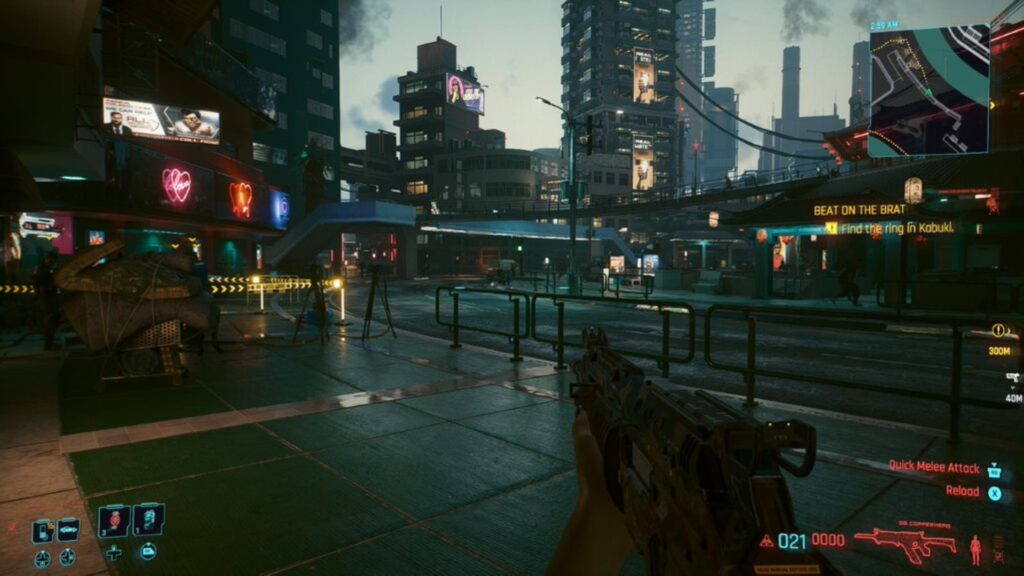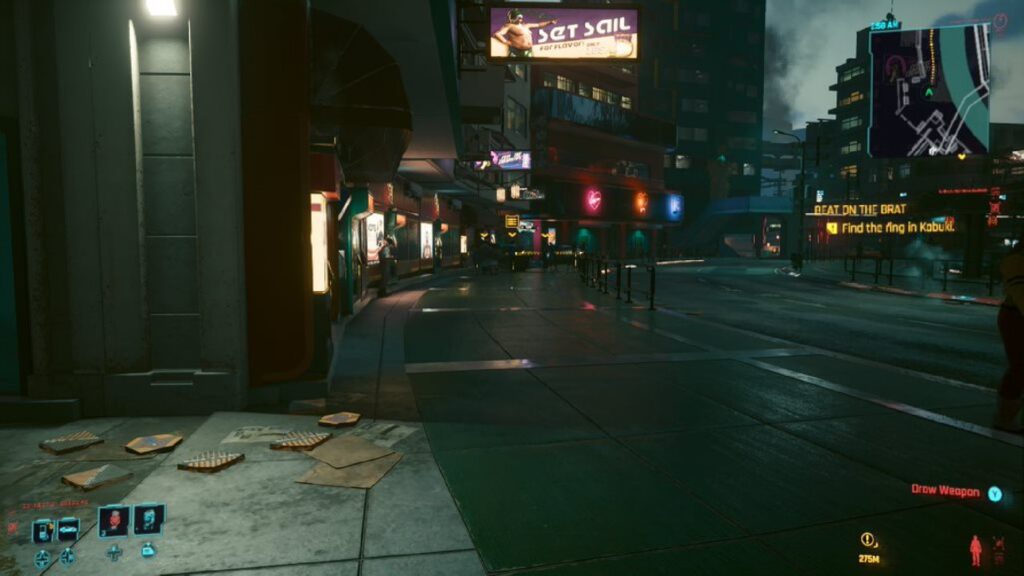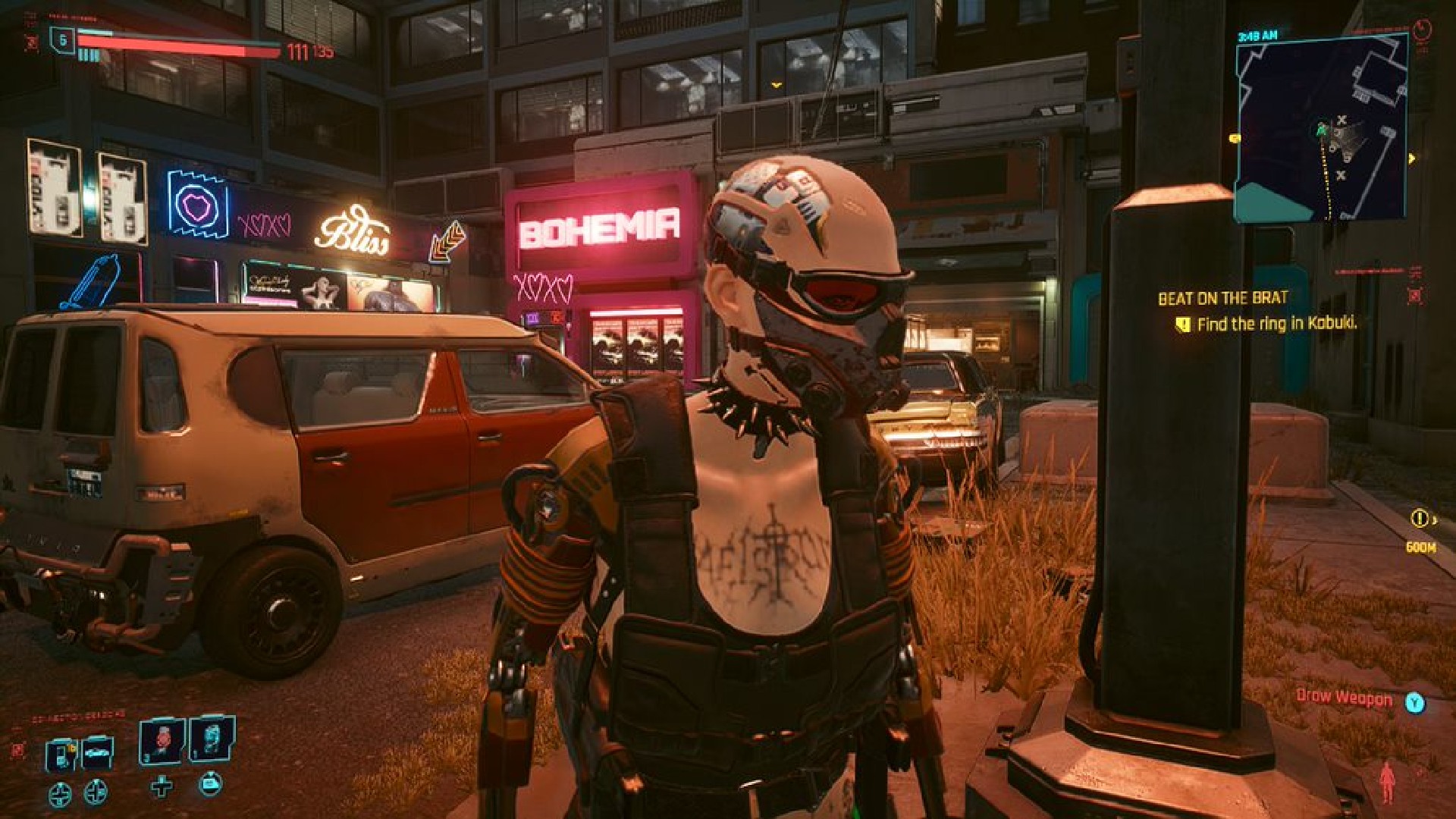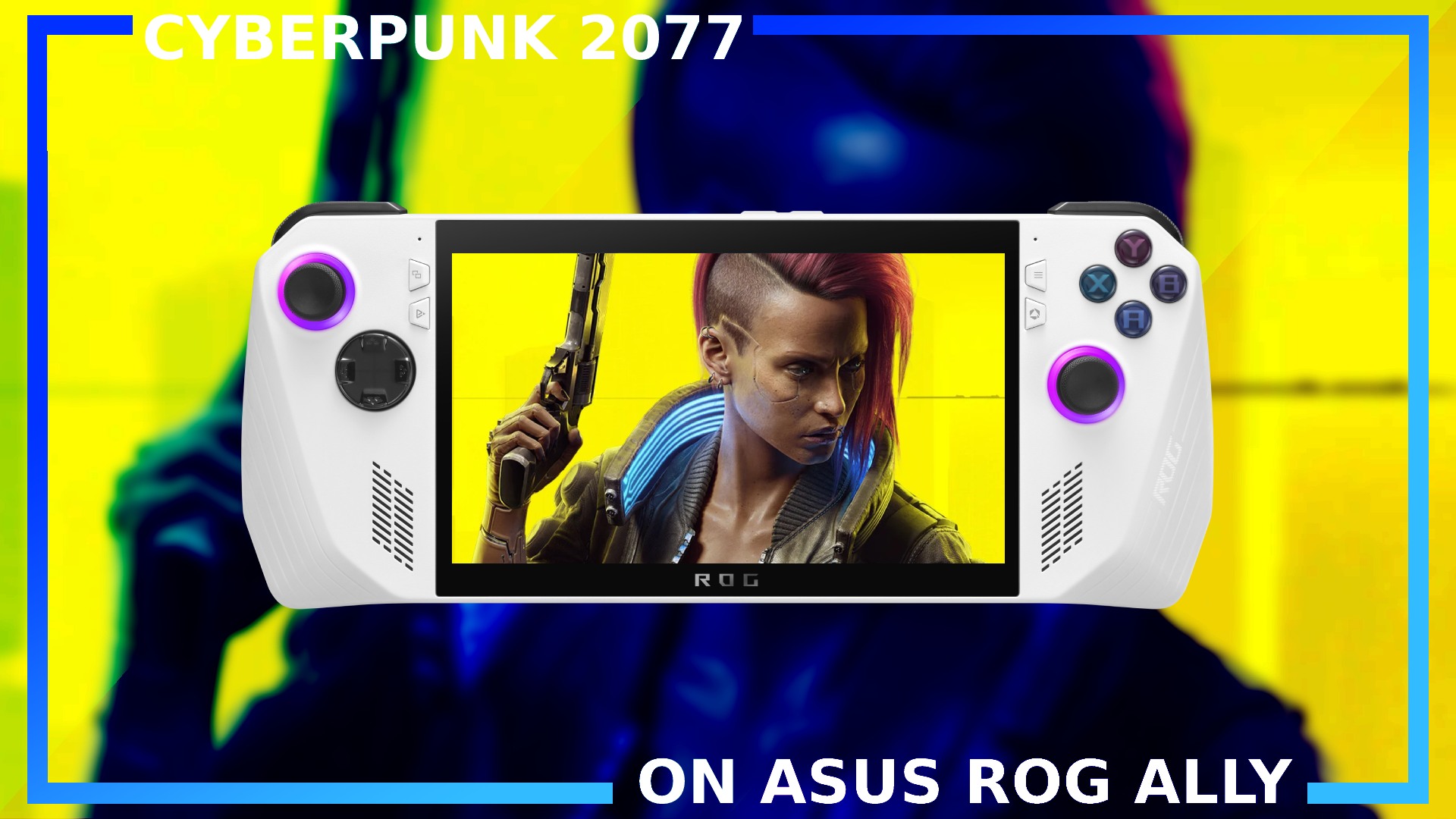Performance Overview

What’s impressed me most about Cyberpunk 2077 on the Ally is just how smooth it is. A constant 60 frames per second isn’t possible, but I don’t think anyone was expecting that out of a handheld. What we have got is a consistent 45 to 55, with highs occasionally reaching 60.
Given the complexity of a game like Cyberpunk 2077, seeing those kinds of framerates on a handheld is, frankly, shocking. That’s some good performance and makes the game super playable.
There are factors that will affect the framerate – busy streets, massive gun battles, driving – but it feels solid in motion. You can, of course, hook up an XG Mobile device or plug in the power supply to boost performance further, but if you’re gaming on the go, this version is the way to go.
Recommended Settings

A smooth 60 frames per second may not be possible, but with my settings below you’ll hit a fluid and very playable framerate.
I opted to go with Intel XE as my image bump solution over AMD FSR. The reason being it produces a cleaner image and makes text more legible. FSR is fine, but the image ends up looking a little grainy and text becomes blurry. I also found Intel XE boosted my frame count by around four to five frames. That may not seem like much, but every bit counts.
If you find yourself struggling for battery it is possible to drop everything down to low and switch to Performance Mode at 15 watts, but the drop in fluidity and image quality isn’t great. If you’re outside with the Ally in handheld mode and need that extra gaming time, sure, do it. It’s still playable at 30 frames per second. But if you’re indoors and near a charger, Turbo Mode at 25 watts is the best way to play.
If you aren’t sold on 720p, our friends over at GamesInHand have a video on how to run Cyberpunk 2077 in 900p. That way you can test out a slightly higher resolution without needing to go all the way to 1080p.
| Cyberpunk 2077 (In-game Settings) | |
| Quick Preset | Custom |
| Resolution Scaling | |
| Dynamic Resolution Scaling | Off |
| AMD FidelityFX Super Resolution 2.1 | Off |
| Intel XE Super Sampling | Quality |
| Intel XeSS 1.1 Sharpness | 0.70 |
| Basic | |
| Field of View | 80 |
| Film Grain | Off |
| Chromatic Aberration | Off |
| Depth of Field | On |
| Lens Flare | On |
| Motion Blur | Off |
| Advanced | |
| Contact Shadows | On |
| Improved Facial Lighting Geometry | On |
| Anisotropy | 8 |
| Local Shadow Mesh Quality | Low |
| Cascaded Shadows Range | Low |
| Cascaded Shadows Resolution | Medium |
| Cascaded Shadows Resolution | Medium |
| Distant Shadow Resolution | Low |
| Volumetric Fog Resolution | Low |
| Volumetric Cloud Quality | Medium |
| Max Dynamic Decals | Low |
| Screen Space Reflections Quality | Medium |
| Subsurface Scattering Quality | Medium |
| Ambient Occlusion | Medium |
| Color Precision | Medium |
| Mirror Quality | Low |
| Level of Detail (LOD) | Low |
| Ray Tracing | |
| Ray Tracing | Off |
| Video |
|
| VSync | 60 |
| Maximum FPS | On |
| Value | 60 |
| Windowed Mode | Fullscreen |
| Resolution | 1280×720 |
| HDR Mode | None |
| ASUS ROG Ally Settings | |
| Profile: Turbo 30w (45-55 frames per second) | Estimated Battery Life: 1 Hour 30 Minutes |
| Docked Mode Resolution: 1280×720 | RSR: Off |
| GPU Usage: 91% | CPU Usage: 46% |
| RAM Usage: 85% | Temperature: 75 degrees |
| Performance Rating: 3/5 | |
Bugs and Issues
Any problems with Cyberpunk 2077 come from Cyberpunk 2077 and not the Ally. CD Projekt Red has done an incredible job at fixing up Cyberpunk 2077 since its launch, but crashes and general weirdness are to be expected.
I’m of the mindset the problems it currently has aren’t a deal-breaker, though. I play Skyrim for goodness sake! So long as the game is good and it’s not crashing every few seconds, it’s manageable.
Steam Deck Comparison

This is a really interesting one because it shows the difference in power between the Steam Deck and the ASUS ROG Ally.
When I reviewed Cyberpunk 2077 on Steam Deck, it was a constant battle to keep the frames above 30. I ended up managing to get to a point where 30 to 45 frames were possible, but it left the game feeling like I was dragging it through a cheese grater. It was playable, and impressive on the Steam Deck, but it wasn’t ideal.
The Ally manages to fill the other half of the 60 target: Instead of 30 to 45, it’s 45 to 60 frames per second. Plus you get to up some of the graphics to medium resulting in a cleaner picture. It’s still imperfect, but it’s the closest we’ve got to the PC and home console experience, and that’s great.
Verdict

Cyberpunk 2077 remains one of the all-timers. The character work pulls you in, the visuals stun, the heated gunplay thrills, and the constant surprises shock.
The fact it’s playable, let alone on a handheld, is no small miracle. There are so many elements at play at any one time that it’s amazing it functions as well as it does.
If you’ve yet to pick up Cyberpunk 2077, you should fix that. And if you want to play Cyberpunk 2077 on the go, the ASUS ROG Ally is the new definitive way to play.

All images captured on ASUS ROG Ally.| To learn more about our review policy click here. | Alternatively, click here to find out why you can trust me.

